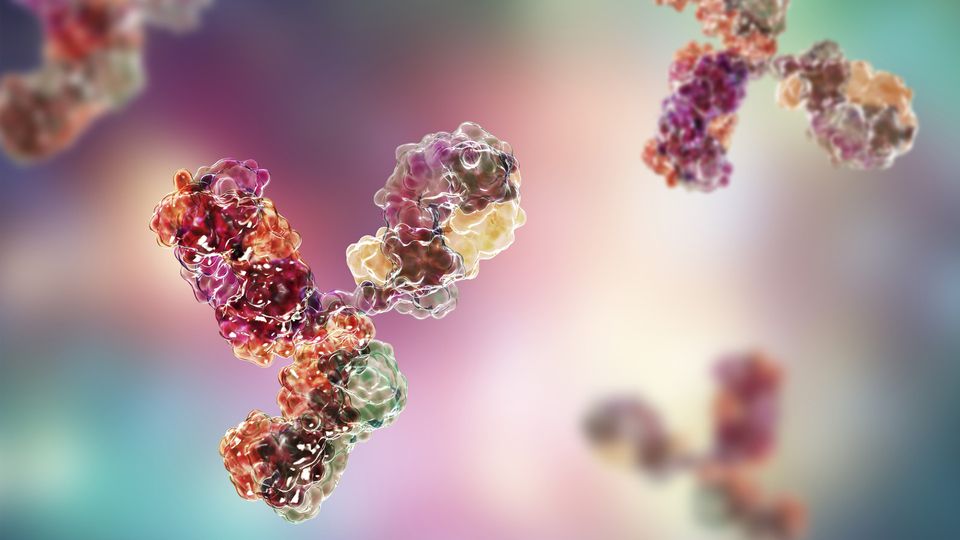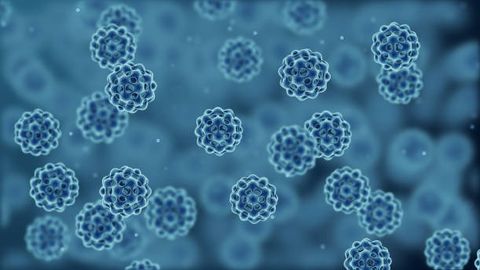Biologic Production and Host Cell Proteins
Host cell proteins can trigger unwanted immunogenic responses, leading to safety and stability concerns in biologics.

Complete the form below to unlock access to ALL audio articles.
Chinese hamster ovary (CHO) cell lines have been a prominent choice to produce monoclonal antibodies (mAbs) and their derived counterparts, such as antibody–drug conjugates (ADCs), antibody fragments and Fc-fusion proteins.
Currently, 89% of biologics produced in mammalian systems use the CHO cell platform.
Despite these advancements, pursuing higher productivity has also led to the accumulation of more impurities during the culturing process. A major impurity accumulated is host cell protein (HCP), a byproduct of cell metabolism. Removing HCPs is crucial as they can trigger unwanted immunogenic responses, leading to safety and stability concerns in the final biologic formulation. Though regulatory agencies place strict guidelines for biologics to be free of such process-related impurities, this has been an ongoing challenge for the industry.
Here, we look to explore current advancements in HCP analysis and strategies to remove such impurities during biologic production and purification.
Lingering host cell proteins and recommendations for better characterization
As previously stated, HCPs are process-related impurities derived from host cells, such as CHO cells, and can copurify with the biologic drug product. While some HCPs may be inert, others are characterized as problematic and considered as high-risk due to their immunogenicity and enzymatic activity with the potential to degrade either the produced therapeutic or stabilizing excipients in the final formulation. Because of this, it is important to characterize a process, understand when high-risk HCPs are present and develop control strategies to mitigate risks associated with HCP impurities during downstream processing.
Today, the workhorse for HCP measurements is the enzyme-linked immunosorbent assay (ELISA), which can quantify residual HCP levels with high sensitivity. This technique is used throughout the downstream process to measure total HCP as the drug product goes through the purification process. However, when elevated levels of HCP are detected, targeted mass spectrometry (MS) is used to identify and quantify the high-risk HCP. If problems persist, other recommended practices include the use of tiered immunogenicity risk assessments followed by in vitro comparative immunogenicity assessment (IVCIA), in vivo immunotoxicology evaluation and analysis of clinical study data, which can also be used to establish links between high-risk HCP impurities and patient safety.
The host cell protein aggregate purification problem
Protein A affinity chromatography is the first step in the downstream processing. Here, a column containing the protein A ligand on the solid phase binds to the target biologic due to its affinity. After which, the column is washed with buffer, which removes cell culture contaminants before recovering the biologic by eluting off the biologic with a low pH eluent. However, it is not just single proteins that are binding to the column, but also larger protein aggregates, which might be drug complexes binding to themselves, producing dimers or trimers, but also binding with HCPs, which would cause their elution with the protein in the elution step, persisting as an impurity.
“This chromatographic phenomenon is due to thermodynamic and transport phenomena. Either there is stronger adsorption of the species onto the protein-A resin or slower diffusion of those species out of the resin. But I suspect it is a combination of both phenomena”, says Dr. Chase Herman, a recent PhD graduate from the University of Delaware, Department of Chemical and Biological Engineering, who has transitioned to the pharmaceutical industry working as a downstream process engineer.
This question about HCP and aggregates is an interesting phenomenon. “While HCP and aggregates have historically been treated as independent impurity classes, there have been recent indications that suggest that these two impurities may be linked.” In an article published recently in Biotechnology Progress, Dr. Herman explored this connection using a shotgun proteomic analysis of high molecular weight (HMW) impurities that were isolated from harvested cell culture fluid (HCCF) and protein A eluate using size-exclusion chromatography (SEC).
Although the mechanisms by which HCP persistence through protein A chromatography are not completely understood, these findings suggest that aggregate association mediates the survival of thousands of HCPs more so than previously presumed. Many of the HCPs present in the analyzed aggregates are not identified in the unfractionated HCCF, which illustrates the false negatives associated with shotgun proteomic analysis. In other words, a negative result suggests that a target HCP is not present above its detection limit. However, this interpretation may be obscured by antibody peptides in the standard digest and the target protein being lost during undigested antibody perception in the native digest. This further solidifies the claim that incorporating coverage enhancement techniques like HCP enrichment for the native digest is essential as it offers greater HCP coverage than the standard digest in both the HCCF and the purified antibody solutions.
So, the persistence of HCP is introduced through aggregates in the protein A eluent; but what can be done about it?
“A great mitigation strategy for HCP persistence would be to find solutions for protein aggregation upstream of the protein A recovery step. But besides this, we should also look at downstream strategies as well, such as investigating the use of hybrid depth filtration and anion exchange, but also investigating the tail end of protein A elution, which can be rich in aggregates as well”.
Capturing host cell protein dynamics during upstream production through population balance modeling
The HCP concentration is known to increase with cell culture duration typically, and although it is known that HCPs are secreted by live cells, they are also known to correlate with dead cell concentrations.
“In the past 20 years, the focus has been on optimizing the bioprocess to allow for high cell densities and high production of these therapeutic products. However, the downstream processes have not been optimized to cater for such high volumes of protein” says Dr. Sakhr Alhuthali, a visiting researcher at the Sargent Centre for Process System Engineering at Imperial College London and assistant professor of Chemical Engineering at King AbdulAziz University in Saudi Arabia.
A solution to capturing and understanding the HCP dynamics in relation to the target biotherapeutic is to produce a model that incorporates these two variables. Dr. Alhuthali investigated the critical concern of HCP accumulation, namely, at which stage of the upstream bioprocess is the production of the therapeutic maximized while keeping HCP impurities low.
After model validation against data, different cell culturing scenarios were chosen to optimize for different process outcomes. Namely, a control process run under physiologically relevant temperatures and varying shifts towards mild hypothermic conditions to allow for either maximized product output or a higher proportion of product to HCP impurity. What was found was that a mild hypothermic condition and an earlier harvest time helped mitigate lower cell viability, which, in turn, allows for a lower HCP impurity level, therefore decreasing bioburden during the downstream purification steps. However, it is important to understand how well the downstream process is equipped to handle impurities. This being said, integrating a model such as this into the process would allow impurity costs associated with downstream processing to be evaluated to aid in the whole bioprocess design, especially for biosimilars.
The future questions for process optimization will depend on the host cell platform used. “While some HCPs are required by the cells to maintain viability, growth and target protein secretion, genetic cell engineering will still need to go a long way to remove those genes that encode proteins that may interfere with the overall industrial bioprocess.” Indeed, this could lead to improved culturing conditions with fewer requirements of nutrient feeding as well. “I also want to see a decrease in processing time and costs associated with model computation; this would allow for faster and more reliable computation or real-time simulation of the process” says Dr. Alhuthali.
Certainly, models that incorporate HCP accumulation are important. It is also essential not to lose sight of product quality, as antibody products from mammalian cells are known to be modified post-translationally, which may alter the therapeutic characteristics. This also adds another dimension to the upstream operation since the process needs to be monitored for product quality and impurities simultaneously.
Outlook of HCP analysis
It is important to understand the technology associated with HCP analysis and the behavior of these impurities during both upstream and downstream processing. The ideal assay for analyzing HCPs would allow for quantitation in a high-throughput manner and detect high-risk HCP impurities. This would encompass using an ELISA or liquid chromatography-mass spectrometry (LC-MS) to get a detailed understanding of the impurities within the process at multiple steps.
Building models that can study and simulate such phenomena will help create better process knowledge to aid in creating process strategies in both the upstream (through culture optimization) and the downstream (through better purification techniques) process workflow, which would inevitably lead to high purity and less risk of HCP contaminants.



